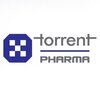Filter interviews by
Alembic Apprentice Trainee Interview Questions and Answers
Alembic Apprentice Trainee Interview Experiences
1 interview found
I applied via Naukri.com and was interviewed in Oct 2022. There were 2 interview rounds.

(5 Questions)
- Q1. Transformer group type?why
- Ans.
Transformer group type refers to the way transformers are connected in a power system.
There are two types of transformer groups: Y (wye) and Delta
Y (wye) transformer group is used for step-down transformers
Delta transformer group is used for step-up transformers
The choice of transformer group depends on the voltage level of the power system and the required voltage transformation ratio
- Q2. Field of interest
- Q3. Dol and star delta starter line diagram
- Ans.
DOL and star delta starter line diagram
DOL (Direct On Line) starter is used for small motors while star delta starter is used for larger motors
DOL starter directly connects the motor to the power source while star delta starter first connects the motor in star configuration and then switches to delta configuration
Line diagrams show the connections between various components in the starter circuit
- Q4. Why natural is grounded in transformer
- Ans.
Natural is grounded in transformer to ensure safety and prevent electrical shocks.
Grounding helps to divert any excess current to the earth, preventing damage to the transformer and other equipment.
It also helps to protect people from electrical shocks by providing a low-resistance path for the current to flow.
In case of a fault, the grounding system will trip the circuit breaker, isolating the transformer from the res...
- Q5. Power factor related or panel.
Top trending discussions






Interview questions from similar companies

I applied via Walk-in and was interviewed in Jul 2020. There was 1 interview round.
Interview Questionnaire
1 Question
- Q1. What about you? And your introduction,? Qualifications, and some questions about the pharma subjects, and why you choose that path or this line of studying?
Interview Preparation Tips

Apprentice Trainee Interview Questions & Answers
Sun Pharmaceutical Industriesposted on 5 Aug 2021
Interview Questionnaire
1 Question
- Q1. Pharma related

I applied via Naukri.com and was interviewed in Sep 2020. There were 3 interview rounds.
Interview Questionnaire
1 Question
- Q1. Interview Questions on Chemistry
Interview Preparation Tips

Apprentice Trainee Interview Questions & Answers
Akums Drugs & Pharmaceuticals Limitedposted on 11 Oct 2021
I applied via Campus Placement and was interviewed before Oct 2020. There was 1 interview round.
Interview Questionnaire
1 Question
- Q1. Define sterilization?
Interview Preparation Tips
On completion of apprentice training u will get 10kOne time and 15.5k monthly. On confirmation u get 10k one time.

I appeared for an interview before Mar 2024, where I was asked the following questions.
- Q1. Tell me about alkem laboratories
- Q2. Why you change the company?

Apprentice Trainee Interview Questions & Answers
Alkem Laboratoriesposted on 13 Jun 2024
(2 Questions)
- Q1. About uv spectroscopy
- Q2. What is disintegration test
Interview Preparation Tips

(2 Questions)
- Q1. Tablet manufacturing process
- Q2. Capsule manufacturing process

Software Engineer Interview Questions & Answers
Zydus Lifesciencesposted on 13 Apr 2024
(1 Question)
- Q1. Angular theory questions asked

I applied via Walk-in and was interviewed before Aug 2023. There was 1 interview round.
(16 Questions)
- Q1. What is Process Validation ?
- Ans.
Process Validation is the documented evidence that a process consistently produces a product meeting its predetermined specifications and quality attributes.
Process Validation is a requirement in industries such as pharmaceuticals, medical devices, and food production.
It involves establishing documented evidence that a process is capable of consistently producing a product that meets its specifications.
Validation activ...
- Q2. Different between exhibit batch vs PPQ batches?
- Ans.
Exhibit batches are used for stability studies and regulatory submissions, while PPQ batches are used for process validation.
Exhibit batches are manufactured for stability studies and regulatory submissions.
PPQ (Process Performance Qualification) batches are manufactured for process validation.
Exhibit batches are typically larger in size compared to PPQ batches.
Exhibit batches are used to demonstrate the product's stab...
- Q3. Which parameters used in tablet manufacturing?
- Ans.
Parameters used in tablet manufacturing include formulation, compression force, tablet hardness, disintegration time, and friability.
Formulation - ingredients used in the tablet
Compression force - pressure applied during tablet compression
Tablet hardness - resistance to breaking
Disintegration time - time taken for tablet to break down in the body
Friability - tendency of tablet to break or crumble
- Q4. What is LOD ?
- Ans.
LOD stands for Level of Detail. It refers to the amount of detail present in a model or visualization.
LOD is commonly used in computer graphics to optimize performance by displaying less detail when objects are far away.
It can also refer to the level of detail in data analysis, where different levels of granularity are used for different purposes.
For example, in a 3D video game, LOD may be used to switch between high-d...
- Q5. What is Cleaning Validation?
- Ans.
Cleaning validation is the process of ensuring that a cleaning procedure effectively removes residues from equipment used in the manufacturing process.
Cleaning validation is essential in industries such as pharmaceuticals, food and beverage, and cosmetics.
It involves establishing documented evidence that the cleaning process consistently removes residues to predetermined levels.
Validation typically includes developing ...
- Q6. How many Batches perform in Pharma industry before comercial batch ?
- Q7. How many types stability test in pharma? And their storage conditions ?
- Q8. What is Film coating?
- Ans.
Film coating is a process in which a thin layer of coating material is applied to a solid dosage form to improve appearance, taste, and stability.
Film coating helps protect the drug from moisture, light, and air
It can also mask the taste of the drug to improve patient compliance
Examples of film-coated tablets include Advil and Tylenol
- Q9. What is ER/IR dissolution acceptance criteria?
- Q10. What is the role of stratified sample analysis and Content uniformity test ?
- Ans.
Stratified sample analysis helps ensure representative sampling, while content uniformity test ensures consistency of active ingredients in a sample.
Stratified sample analysis involves dividing a population into subgroups based on certain characteristics before sampling.
Content uniformity test is used to ensure that the amount of active ingredient in each dosage unit is consistent.
Both techniques are important in quali...
- Q11. What is CPP and CQA of tablets ?
- Ans.
CPP stands for Critical Process Parameters and CQA stands for Critical Quality Attributes of tablets.
CPP are the key variables that must be controlled to ensure the tablet manufacturing process is successful.
CQA are the characteristics that are critical to the quality of the tablet and must be monitored and controlled.
Examples of CPP include mixing time, compression force, and drying temperature.
Examples of CQA include...
- Q12. How many types of excipients? And their role ?
- Q13. What is HPLC , KF, & Dissolution?
- Q14. What is the role of disintegration test and criteria of disintegration test for tablets?
- Ans.
Disintegration test is a test performed on tablets to determine the time it takes for a tablet to break down into smaller particles.
Disintegration test helps to ensure that the tablet will disintegrate properly in the body for effective drug release.
The criteria for disintegration test vary depending on the type of tablet and the intended use.
Common criteria include the time it takes for the tablet to disintegrate into...
- Q15. Which parameters use in Dry Granulation? And what is the reason behind to do dry Granulation?
- Ans.
Parameters used in dry granulation and reasons for its use.
Parameters include particle size, shape, and density of the powder material.
Reasons for dry granulation include avoiding use of solvents, improving flow properties, and enhancing compressibility.
Examples of dry granulation methods are slugging and roller compaction.
- Q16. What is coating in tablet ? And their parameters?
Interview Preparation Tips
Skills evaluated in this interview
Alembic Interview FAQs
Tell us how to improve this page.
Alembic Interviews By Designations
- Alembic Medical Representative Interview Questions
- Alembic Area Sales Manager Interview Questions
- Alembic Zonal Manager Interview Questions
- Alembic Assistant Manager Interview Questions
- Alembic QA/QC Manager Interview Questions
- Alembic Executive Interview Questions
- Alembic Operator Interview Questions
- Alembic Pharmacist Interview Questions
- Show more
Interview Questions for Popular Designations
- Apprentice Interview Questions
- Apprenticeship Trainee Interview Questions
- Graduate Apprentice Trainee Interview Questions
- Graduate Apprenticeship Trainee Interview Questions
- Diploma Apprentice Trainee Interview Questions
- Apprentice Engineer Interview Questions
- Technical Apprentice Trainee Interview Questions
- Graduate Apprentice Interview Questions
- Show more
Alembic Apprentice Trainee Interview Process
based on 1 interview
Interview experience
Apprentice Trainee Interview Questions from Similar Companies
Alembic Apprentice Trainee Reviews and Ratings
based on 1 review
Rating in categories
|
Senior Executive
51
salaries
| ₹5.2 L/yr - ₹12.5 L/yr |
|
Executive
41
salaries
| ₹2.2 L/yr - ₹6.5 L/yr |
|
Research Associate
24
salaries
| ₹3.5 L/yr - ₹6.2 L/yr |
|
Medical Representative
24
salaries
| ₹1.8 L/yr - ₹9.2 L/yr |
|
Assistant Manager
21
salaries
| ₹5.6 L/yr - ₹15 L/yr |

Cipla

Dr. Reddy's

Lupin

Zydus Lifesciences
- Home >
- Interviews >
- Alembic Interview Questions >
- Alembic Apprentice Trainee Interview Questions










